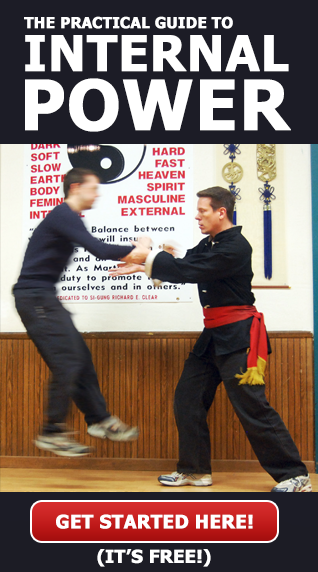“This is Chaper 3 from Chi Energy – Activation, Cultivation and Flow“
In Chinese medicine there are at least five different primary methods of healing and there are numerous other lesser known methods of healing. The main five methods of healing are acupuncture, herbology, Chi Kung, bone setting and tuina massage. Each of these methods has many subcategories, methods and different schools of thought.

YIN & YANG
BALANCE = UNITY OF POLAR OPPOSITES
TCM utilizes Chi and Yin and Yang theory. The basic idea as applied to Chinese Medicine is that balance is the proper state of health. Yin and Yang are polar opposites that are partly defined by each other such as big and small, fast and slow, hot and cold, action and stillness, light and dark, up and down, wet and dry etc.. If there is imbalance in the body, mind or spirit such as to much heat or to much cold then it is unhealthy and sickness will result. The goal of healing with TCM and healing Chi Kung is to restore, regulate and maintain Chi balance to the mind, body and spirit.
Yin and Yang theory is one of the least understood aspects of TCM by most Westerners because it is variable and not fixed. For example: Earth is Yang and Water is Yin. However, either can be yang/hot or yin/cold. Compared to hot water steam is Yin or light even though it is in a hotter (more yang) temperature state than the liquid hot water. Ice is more yang than cold water because it is harder than liquid water even though by virtue of the temperature it is in a colder (more yin) state. Fifty degree air temperature is yin compared to 100 degrees but is yang compared to 10 degrees.
ACUPUNCTURE MERIDIANS AND POINTS
The largest and most common school of thought in TCM (Traditional Chinese Medicine) utilizes meridian and pressure point theory. Meridians are invisible pathways in the body much like the nervous system that carries electrical pulses and stimuli except the meridians are thought to be channels or pathways that Chi energy flows through. Where the meridian lines can easily be accessed from the body surface is where most of the pressure points are located. Quite often pressure points are located in the same vicinity of the body where a blood artery or large vein and large nerves or nerve bundles are near the surface of the body.
If you look closely at most acupuncture charts you will usually see the meridian lines on the chart and the pressure points are on the lines.

Most acupuncturists will first talk with the client/patient and have the patient fill out a questionnaire in much the same manner as a regular Western medical office. Then, the acupuncturist will do at least one version of Traditional Chinese Medicine diagnosis. There are many different diagnosis methods including but not limited to looking at the tongue or eyes or end of finger tips but the most common traditional method is Pulse diagnosis. Advanced masters can diagnose by sight.
To perform pulse diagnosis the acupuncturist will place their fingers on the palm side of the wrist and feel the energy flow through the soft tissue of the wrist. The sensations being felt for are a fast, slow, extra strong or extra weak pulse in one or the other of the meridians. Also, the practitioner is feeling for heat/dryness or wetness and/or any sensation that distinguishes one meridian from the others. Any difference in sensation indicates an imbalance in one or more meridians which in turn reflect physical problems or maladies. The idea in acupuncture is that by adjusting the meridians the physical state should also improve. A very sensitive touch is required to diagnose this way but it is simply a matter of practice to learn it.
Once the diagnosis has been made then the acupuncturist will consider the treatment options and insert the needles into the correction points. Then, the TCM physician uses sensitive touch once again to turn and adjust the needles so that they are influencing the flow of Chi through the meridians and hence adjusting the Chi flow through the entire body. Multiple follow-up treatments may be required to get the body to go back into balance and to fully accept the chi flow adjustment.
Historically, in China once the needles have been inserted into the patient then the TCM practitioner will influence the chi flow by using their hands and fingers to direct chi through the needles without touching the needles or the patient. This method is rarely practiced today as most practitioners do not have the knowledge or skill required to properly do it. Also, the Chi flow can be directed without needles. Using energy to direct the flow of Chi is taught in our more advanced programs.

Speak Your Mind